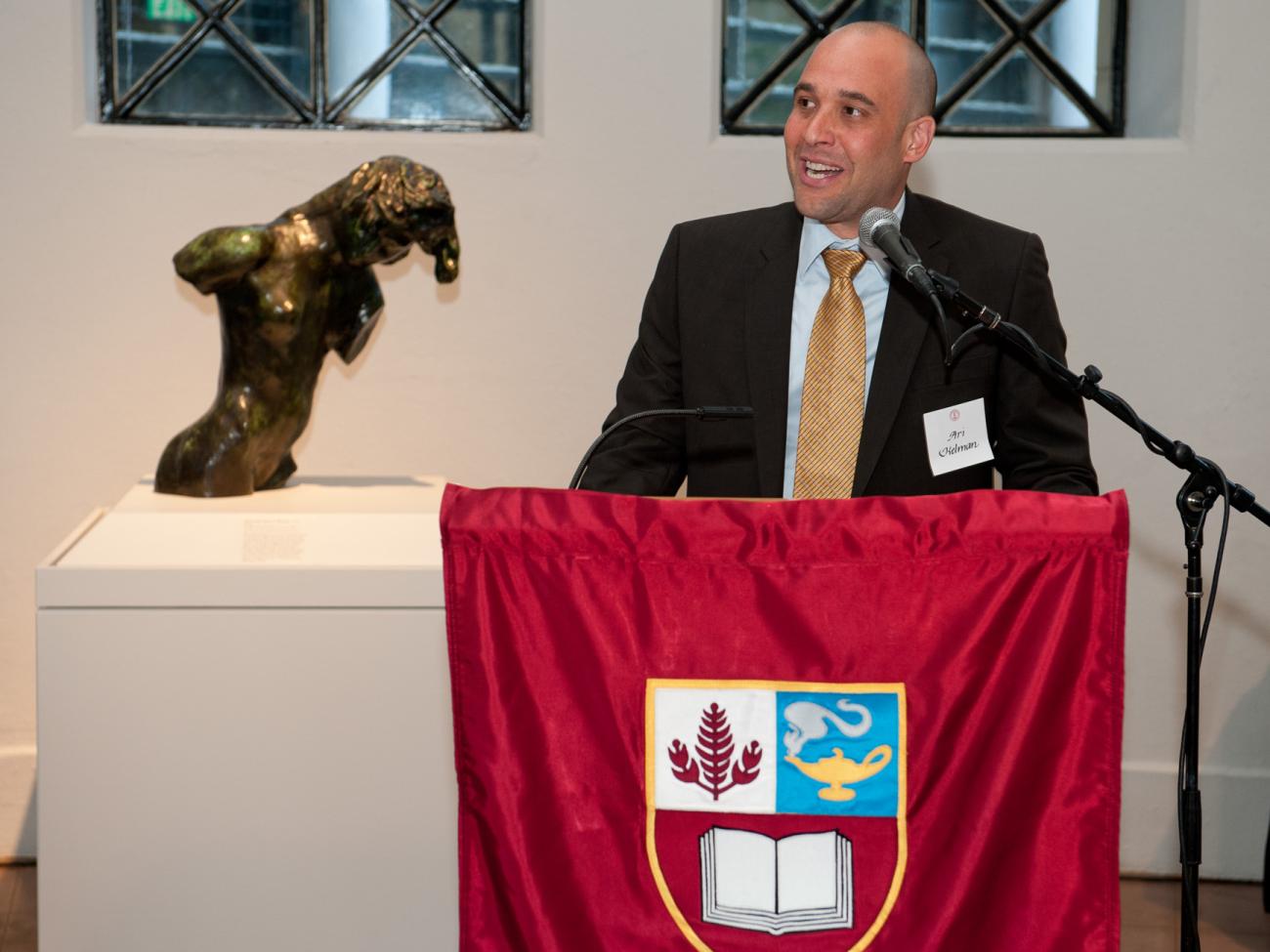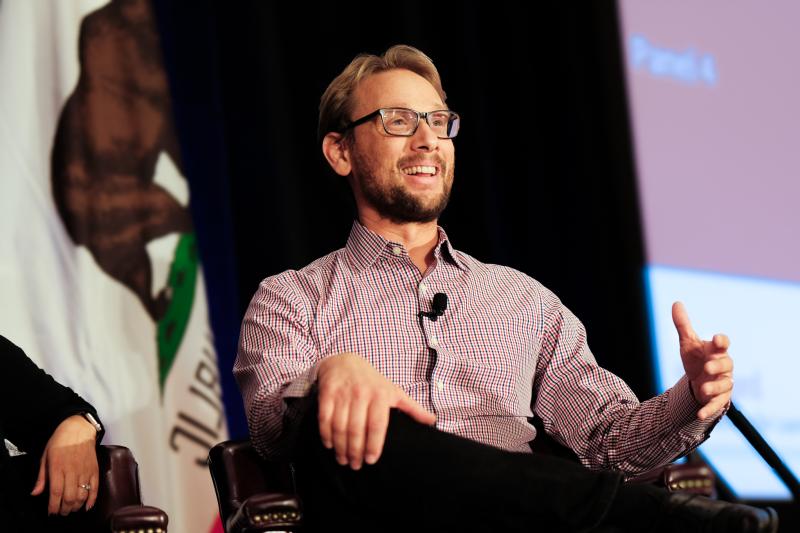
“Learning to be Jewish”, an Interview with Ari Y. Kelman
Before joining the Stanford School of Education as the inaugural Jim
Joseph Chair in Education and Jewish Studies, Ari Y. Kelman was an associate professor of American Studies at the
University of California, Davis. He is
interested in research at the intersection of education and Jewish Studies,
with an emphasis on the myriad ways in which people cultivate ethnic and
religious identities and practices. His
research focuses on questions of culture in all of its manifestations,
including the material, aural, visual, and ideological. He is the author of Station Identification: A Cultural History
of Yiddish Radio (University of California Press, 2009), editor of Is Diss a System? A Milt Gross Comic Reader
(NYU Press, 2010), and co-author of Sacred
Strategies: Transforming Synagogues from
Functional to Visionary (The Alban Institute, 2011). Kelman directs the new
doctoral concentration in Education and Jewish Studies.
The subjects of your books and scholarship have varied in quite interesting ways. Is there a common thread that you’re following?
The question that interests me the most is how people learn by engaging with two phenomena: popular culture and religion. I’m especially interested in how that happens outside of schools. For example, in the book about Yiddish radio, I tried to understand how Jewish immigrants tried to figure out what it meant to be a minority community and how they used the most cutting-edge mass medium, at that time, to interact with mainstream popular culture. Mass media shaped both how they learned to be Americans, and how they learned to be Jewish in America.
My next book presented the flip side of that conversation. I was looking at Milt Gross, whose cartoons were in English but in a highly stylized Yiddish dialect. Again, popular culture provided a space in which Gross, himself an immigrant, could affectionately caricature Jewish culture by using Yiddish accents, but by rendering it in English. Working in a medium that nobody seemed to take seriously allowed Gross to speak across the immigrant-native divide and parody otherwise complex issues that immigrants faced.
In my other book, my co-authors and I looked at synagogues as educational venues. We not only focused on synagogue schools, but also on worship, community building, and social justice work. We looked at what makes synagogues places where people go to engage in conversations around religion and community. Again, for the majority of people we interviewed, synagogues were places of learning, even when that happened through volunteer work or worship.
Your new book is titled, Learning to be Jewish. What will it be about?
I don’t know if that will be the title anymore. Originally, I thought of it as a collection of essays that would look at different cultural texts that “taught” people to be Jewish – “Fiddler on the Roof” or The Jewish Catalog, for example. I am interested in how people learn to navigate Judaism in all of its complexities. People learn to be Jewish in a variety of places and practices: film festivals, casual conversations, family dinners, and tourism, to name a few. Becoming religious is one dimension of the larger phenomenon I’m interested in, but that is certainly not my central focus. I am using the phrase, “learning to be Jewish” to frame my own research, focusing on the very informal and often uncoordinated ways that people learn to engage with Jewish knowledge, ideas, people, and institutions.
I notice that you tweet and blog fairly often. How does that all fit into your job as a faculty member in our School?
I’m a very bad blogger, and a worse tweeter. I don’t do either very much these days. For me, tweeting is more like a conversation, but blogging is different. I think blogging is a useful vehicle for hashing out even partially formed ideas. For my students, blogging will be a chance to share what they are learning in their classes, and voice their views of current events and new ideas in a public forum. It’s critical that my students know how to talk to other academics on a scholarly level, but they also need to be able to talk to people beyond the academy. I hope that blogging, among other things, will help them do that. If we can extend the research and learning that we do in the Concentration in Education and Jewish Studies to the outside world and engage people who are interested in questions about religion and ethnicity, community and religion, that’s a good thing.

Ari Y. Kelman with his parents, Stuart and Vickie Kelman
What does it mean to be the Jim Joseph Chair?
It’s a combination of opportunity and responsibility. First and foremost, it’s the opportunity to contribute to the understanding of the relationship between religion and education. Second, it is about training students to advance that field of research, too. I’m excited about helping build a creative community in which students can develop their own research interests and projects that will benefit the world they live in. For me, I want to push the field of education to think more critically about religion and push the field of religious studies to think more critically about education, both inside and outside of formal learning environments. In terms of responsibility, I think this field of study is important for understanding contemporary life, politics and culture – for Jews specifically, but for religious and ethnic communities more generally, as well.
What should we know about this new concentration in education and Jewish studies?
I want the concentration to be known as a place for critical scholarship that will inform practice, theory, and policy. It’s really important to me that we do some comparative work across religious and ethnic lines and engage in conversations about that work. If we’re just talking about Jews for Jews, then we’re not taking full advantage of the opportunity to work in this rich field.
Similarly, if we approach education narrowly and only examine schools, we are missing the complex sites and circumstances in which people engage with religious ideas, information, texts, communities, and traditions. Developing a rigorous research program to examine the intersection of these fields will help people and institutions better understand the work they do, and encourage deeper understandings of these complex phenomena.
For more information about the new Concentration in Education and Jewish Studies, visit http://edjs.stanford.edu



